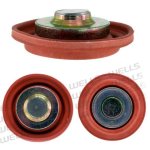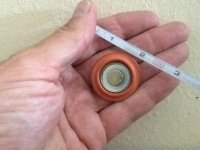2010 , 200 hp, DFI. Fuel Pressure Regulator Diaphragm has a tear. I understand Merc. will not sell the diaphragm as a single part because of some "EPA" restriction. I think this is major BS so sent a FOIA request to the district 5 (WI) EPA director requesting clarification if this is so or not. Geez, I can buy a FPR diaphragm for chev, buick, suzuki, BMW, AEM, Holly, Mallory for about $4.50 rather than a complete fuel rail for what, $1500 from Merc. Also sent a e-mail to merc for official clarification. Yeah, Pelican will "rebuild" the diaphragm for ....... now get this................ $300.00 minimum advertising that "you save 100's of dollars". So I guess the question is that if Merc. can't sell the diaphragm why can pelican . Both are ripping off the consumer. Greed pure and simple. I seriously doubt that the EPA is the reason.
One other complaint about Merc. Don't get me wrong I think Merc's are great. In particular the DFI's. However many other modern outboards have a NMEA 2000 buss that connects directly to things like Lowrance Gen2 devices that will display motor information. Not Merc. You have to buy a merc gateway for again big bucks or buy again merc smartcraft guages for big bucks. This is just pure and simple greed.
Well thats enough venting for one day Geez, don't get me started. CD
Geez, don't get me started. CD
One other complaint about Merc. Don't get me wrong I think Merc's are great. In particular the DFI's. However many other modern outboards have a NMEA 2000 buss that connects directly to things like Lowrance Gen2 devices that will display motor information. Not Merc. You have to buy a merc gateway for again big bucks or buy again merc smartcraft guages for big bucks. This is just pure and simple greed.
Well thats enough venting for one day




![IMG_20150512_205641_620[1].jpg IMG_20150512_205641_620[1].jpg](https://www.marineengine.com/boat-forum/data/attachments/3/3157-7eb6c0e7ae7c3ab241b8f32992c2318a.jpg)
![IMG_20150512_205632_144[1].jpg](/boat-forum/data/attachments/3/3160-bb12bbc420ca04803f718f8f81ab5631.jpg)